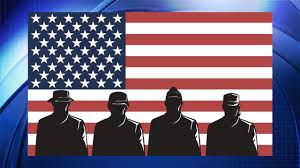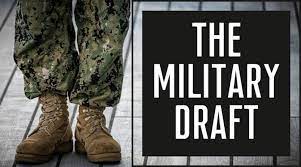
Equality, Tradition, and Contemporary Perspectives
The inclusion of males in the draft has been a subject of debate and controversy in numerous nations, including the United States. For years, the Selective Service System in the U.S. has mandated that all eligible males must register for the draft upon reaching 18 years old, while females have been exempted from this requirement. This difference has sparked conversations regarding equality, tradition, and the changing role of women within the forces. In this article, we will explore the background arguments supporting and opposing a male draft and contemporary viewpoints on this matter.
A Brief History of the Draft
In order to grasp the discussion regarding the exclusion of females from the draft, it is crucial to delve into the historical origins of conscription. The idea of service dates back many centuries, with different countries adopting it during times of conflict or when faced with national emergencies. In the United States, conscription has had an impact on shaping the country’s past, particularly during significant events like the Civil War, World Wars I and II, the Korean War, and the Vietnam War.

Significant changes occurred in the draft system during the century. In 1940, the enactment of the Selective Training and Service Act marked a milestone as it introduced the peacetime draft in American history. This Act mandates that men aged between 21 and 35 must register for service. Although the draft was suspended after World War II, it was later reinstated during both the Vietnam Wars. However, in 1973, the United States transitioned to an all-volunteer system, effectively putting a halt to drafts. Despite this change, young men are still required by law to register with the Selective Service System as a measure for any reinstatement of conscription.
Arguments for the Male-Only Draft

Throughout history, there has been an argument in favor of maintaining the male draft based on tradition and historical precedent. This view stems from the fact that men have historically taken on combat roles while women have primarily been assigned support positions. Proponents argue that the draft should reflect this division of labor.
Another point raised in favor of the male draft is the consideration of biological differences between men and women. Advocates assert that on average, men possess strength and stamina, which makes them more suitable for combat roles. Based on this perspective, they believe it is justified to exclude women from conscription.
There are also those who see conscripting men as a means of achieving gender equality through service. They argue that by subjecting both sexes to service, it levels the playing field in terms of responsibilities. However, if women were to be included in the draft, these proponents believe they should be held to the same combat roles and physical requirements as their male counterparts.
Arguments Against the Male-Only Draft

Gender Equality: Critics of the draft that only applies to males argue that it contributes to the persistence of gender inequality. They maintain that, in a society that values gender equality, both men and women should be equally responsible and obligated, including when it comes to service.
Gender Roles: Opponents contend that the male draft reinforces antiquated gender roles and stereotypes, restricting women’s opportunities to serve in combat positions for which they are well qualified. They believe that the draft needs to adapt in order to reflect evolving norms and the increasing involvement of women in the military.
Legal Challenges: The male draft has faced challenges on grounds related to gender equality principles. In 2019, a federal court declared the male draft unconstitutional. While this ruling did not immediately alter the law, it brought renewed attention to this matter. Stimulated discussions regarding its future.
Contemporary Perspectives
The discussion surrounding the draft exclusively for males remains a topic of development in the 21st century. In December 2019, Congress formed the National Commission on Military, National, and Public Service with the aim of evaluating the Selective Service System and deliberating whether to broaden registration criteria to include women. This commission actively sought input from professionals, military officials, and the general public to ensure informed recommendations were made.

In March 2020, the commission published its report, suggesting that the need for draft registration should be broadened to encompass individuals of all genders. This suggestion has sparked renewed discussions in Congress, leading to the introduction of bills aimed at amending the legislation accordingly.

The issue of having a draft for males is a complex and controversial one. It raises questions about tradition, equality, and the changing roles of men and women in the military. While people continue to debate this topic, it’s evident that societal attitudes towards gender roles and equality are evolving. As a result, the selective service system may need to adapt in order to reflect these changes. Whether the United States will move towards a draft that includes all genders or maintain the current system remains uncertain. However, it’s crucial to have discussions like these as they highlight the progress towards gender equality within both society and the military.






Leave a Reply